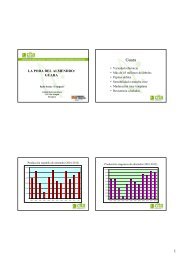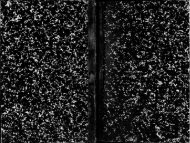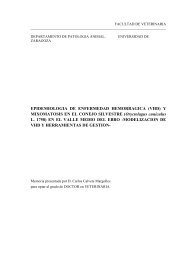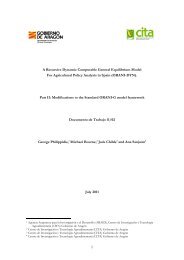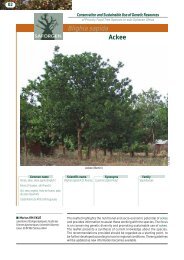SOFTWARE FOR ON-FARM IRRIGATION SCHEDULING ... - citaREA
SOFTWARE FOR ON-FARM IRRIGATION SCHEDULING ... - citaREA
SOFTWARE FOR ON-FARM IRRIGATION SCHEDULING ... - citaREA
Create successful ePaper yourself
Turn your PDF publications into a flip-book with our unique Google optimized e-Paper software.
29<br />
30<br />
31<br />
32<br />
33<br />
34<br />
35<br />
36<br />
37<br />
38<br />
39<br />
40<br />
41<br />
42<br />
43<br />
44<br />
45<br />
46<br />
47<br />
48<br />
49<br />
50<br />
51<br />
52<br />
1. Introduction<br />
In semi-arid areas, as in most of Spain, the productivity of stone fruit orchards heavily<br />
depends on irrigation. The area devoted to stone fruits in Spain is 215,500 ha (MARM,<br />
2010). 86% of this area is irrigated, with a total production of 2.9 million tons.<br />
Advanced irrigation techniques (such as Regulated Deficit Irrigation, RDI) offer to this<br />
productive sector the opportunity to conserve irrigation water, improve fruit quality and<br />
reduce the cost of pruning (Fereres and Soriano, 2007).<br />
The application of advanced irrigation techniques requires previous knowledge of<br />
standard irrigation techniques, which are based on crop water requirements.<br />
Recommendations on crop coefficients (Kc) are often site and year specific, and have<br />
been reported to depend on local reference evapotranspiration (ETo), rainfall, and crop<br />
management practices (Allen et al., 1998). Several authors have compared the results<br />
obtained using the standard FAO 56 approach (Allen et al., 1998) with measured<br />
evapotranspiration using various approaches (Casa et al., 2000; Allen, 2000; Lascano,<br />
2000; Dragoni et al., 2004). These comparisons have often shown a significant<br />
overestimation of basal crop coefficients when the FAO 56 method was used, as compared<br />
to evapotranspiration measurements (Paco et al., 2006). Therefore, local adaptation of the<br />
standard approach seems to be required before advanced irrigation management can be<br />
implemented in fruit orchards.<br />
Regulated deficit irrigation (RDI) has been documented in the literature as a successful<br />
strategy for water conservation in fruit orchards. RDI has enjoyed more success in tree<br />
crops and vines than in field crops (Fereres and Soriano, 2007). This technique is based<br />
on: 1) plant sensitivity to water stress varies among phenological stages; and 2) water<br />
stress at specific phenological periods can help control growth and vegetative-fruit



